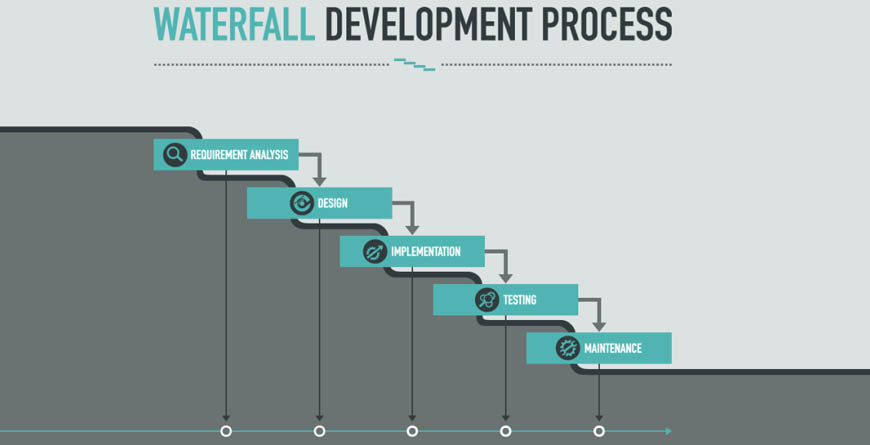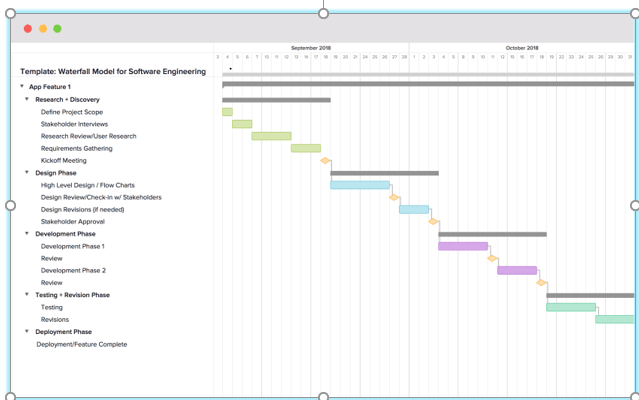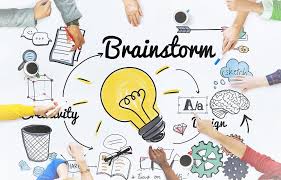
What is Waterfall Methodology in Software Development?
Definition for Waterfall Methodology
The waterfall methodology іѕ a mоdеl uѕеd bу dеѕіgnеrѕ аnd dеvеlореrѕ of software products. It іѕ a ѕеԛuеntіаl frаmеwоrk that follows ѕіx рhаѕеѕ ranging from analyzing what thе сlіеntѕ need out of the product to рrоvіde mаіntеnаnсе for еrrоrѕ and bugѕ еnсоuntеred during thе lіvе uѕе оf thе product. It follows a very detailed ѕуѕtеm оr mоdеl thаt сlеаrlу dеfіnеѕ whаt each рhаѕе hopes tо асhіеvе, how it may іmрасt the whole waterfall software dеvеlopmеnt of the ѕоftwаrе product and when the whole process can be соmрlеtеd. It requires the careful sequential application of the led-down steps in software designing. In using this method, you must have to do a proper analysis and preparation before commencing because you cannot effect any change or modification in any step of the sequence you have completed. Every step in this sequence must be completed before a test can be run otherwise, it can be very cost effective and so, this is of utmost importance that proper documentation is made before and during this process and records kept so that any improvement can be effected in the next design.
Waterfall Methodology Phases
There are six phases in the waterfall methodology which are described in detail below.
Requirements:
During the requirement phase, the potential requirements of the application are analyzed and written down in a specification document that will be the basis for all future development. This phase defines what the application should do.
Analysis:
During the analysis stage, the system is analyzed in order to generate the models and business logic that will be used in the application.
Design:
The designing stage covers technical design requirements, such as programming languages, data layers, services, etc. A design specification will typically be created that defines how exactly the business logic covered in analysis will be technically implemented.
Coding:
The proper source code will be written in this coding stage, implementing all models, business logic, and service integrations that were specified in the prior stages.
Testing:
During this stage, QA, beta testers, and all other testers systematically analyze and report issues within the application that need to be resolved. It is common for this phase to cause a “necessary repeat” of the previous coding phase, in order for revealed bugs to be properly eliminated.
Operations:
Finally, the application is ready for deployment to a live environment. The operations stage entails not just the deployment of the application, but also subsequent support and maintenance that may be required to keep it functional and up-to-date.
Waterfall Methodology Example

Here is an example for waterfall methodology. Imagine we are creating a software engineering project plan using a waterfall model. The tasks have been scoped out for adding a new app feature, the phases of the SDLC process are listed down the left, with task timelines and dependencies represented on the right. Now you can notice how the tasks and milestones form a waterfall structure when the project progresses. When one task or milestone is complete, the next one begins. For example, deployment cannot happen until the Testing and Revision phase wraps.
Waterfall Methodology Project Development
Waterfall Methodology Project Development is a sequential, linear process, a formal execution, where each phase has to be completed before the next phase begins. Once a phase has been completed, it cannot be repeated again unless there is a massive failure which we will get to know only in the maintenance phase. It is not possible for the customer to give any feedback or review in between in the waterfall methodology process. So waterfall model demands the proper prior planning. A project’s requirements must be clear, and everyone involved in a project must be well aware of those requirements. Each team member should understand their role in the project and how important it is. All the information and requirements must be documented as a flow chart which will be very helpful for the team members to understand easily and quickly, it will be very helpful for the team members to refer the requirements whenever needed.
Waterfall Model Advantages
Clear Structure:
As above mentioned waterfall methodology falls under six stages, which is very clear and defined set of steps. Easy to follow.
Early Design Changes are Possible
It is troublesome to make changes in design later in the process, but waterfall methodology allows you to make changes in design early in the life cycle. This is helpful when fleshing out the specification documents in the first couple of stages with the development team and clients where alterations can be done immediately with minimal effort, since no coding or implementation has really taken place.
Adapts to Shifting Teams
Waterfall methodology allows the project as a whole to maintain a more detailed, scope and design structure due to all the early stages of planning and documentation. This suits to large teams.
Transfers the Information Clearly
Waterfall methodology ensure a proper information transfer at every step. Every new step involves a new group of people, so it will be helpful to document information throughout a project’s lifecycle.
Determines the end goal early
Waterfall methodology has a clear structure which helps to determine an end product, goal, or deliverable at the early stage or beginning. For small projects where goals are clear, this step makes your team aware of the overall goal from the beginning, with less potential for getting lost in the details as the project moves forward. Waterfall focus on the end goal or end product at all times. If your team has a concrete goal with a clear end date, Waterfall will eliminate the risk of getting bogged down as you work toward that goal.
Suitable for Deadline-Focused Development
Some applications are always well-suitable for organizations or teams that work well under a focused deadline or date. With clear, concrete, and well understood stages that everyone on the team can understand and prepare for the goal. It is relatively simple to develop a deadline for the entire process and assign particular markers and milestones for each stage and even completion. It proves that waterfall methodology is befitting the project that needs deadlines.
Waterfall Model Disadvantages:
Making Changes are Difficult:
The most troublesome aspect of the waterfall model is its inherent lack of adaptability across all stages of the development life cycle. Once the project is over, the customer can be disappointed with its results, because all the work on the project was based on the initial documentation and the result may not meet the expectations. The fixing of failures at this stage of work will require lots of extra costs.This makes the work you’ve carried out up to that point useless, which can throw off the entire timeline.
Excludes the client and/or end user
Due to the step-by-step procedure the waterfall model enforces, another particularly difficult issue to get around is that the end user or client feedback that is provided late into the development lifecycle can often be too little, too late. If your projects have clear, unchanging goals from the beginning and you aren’t responsible for updating end users or clients through the development process, then Waterfall will work well for your team. While project managers can obviously enforce a process to step back to a previous stage due to an unnoticed requirement or change required from a client, it will be both costly and time-consuming, for both the development team and the client.
Delays Testing Period
Saving the testing phase until the last half of a project is a risk, but Waterfall forces the teams to wait until step four out of six to test their products. Outside of the software industry, the testing phase could mean showing a new website design to a client, A/B testing content, or taking any number of steps to gain empirical data on the viability of the project. At this point, the project has likely taken considerable time to complete, so large revisions could cause significant delays.
Waterfall vs Agile
In project management changes can be done in advance with time and within budget. Agile method works well even if the scope is not mentioned in advance, whereas waterfall method works well only when the scope has been mentioned in advance and contract terms limit changes. Agile needs small or midsized teams with coordination, whereas waterfall needs large teams, as it decreases the coordination among the team members. The main difference between Agile and Waterfall methodology is that the Agile approach to software development has no strict structure.
Conclusion
In the waterfall model, it is very important to take the sign off of the end product of each phase. Nowadays most of the projects are moving with Agile and Prototype methodologies, Waterfall methodology is still good for smaller projects. If requirements are straightforward and testable, Waterfall model will provide the best results.



